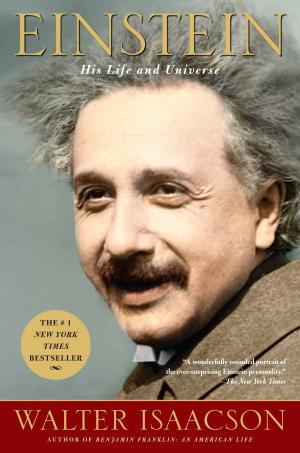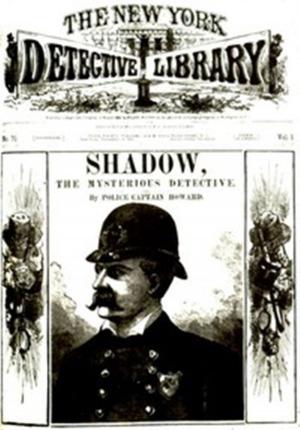Coming Out Book, the Story of a Gay Christian Youth Pastor
Nonfiction, Family & Relationships, Biography & Memoir| Author: | Marcell Kincses | ISBN: | 9781311653611 |
| Publisher: | Marcell Kincses | Publication: | August 6, 2014 |
| Imprint: | Smashwords Edition | Language: | English |
| Author: | Marcell Kincses |
| ISBN: | 9781311653611 |
| Publisher: | Marcell Kincses |
| Publication: | August 6, 2014 |
| Imprint: | Smashwords Edition |
| Language: | English |
Synopsis
Marcell Kincses: Coming Out Book, The Story of a Gay Youth Pastor
In the prologue MARCELL names the target audience: Christians, the LGBT community and their family and friends. The first chapter starts with a converstational episode at the tattoo artist, where the wished motives are being explained, ginkgo, black swan and lotus, making a correlation with being gay, framing it as a journey of battle and dignity.
The author continues with detailed stories of his childhood, a kid filled with love for nature, sensitive, shy but protective of his younger brothers. Back in Hungary the family finds the church in Budapest in which he also decides to get baptized at the age of fourteen. He describes his good relationship with the Pastor and talks about confessing early on his homosexual temptations as being considered sinful, he wants to get rid of them. Paralell to this, the same sex desires are not going away, and he is describing his encounters with his – then 11 year old peer, PETER, on whom he has his first platonic crush. His parents are only stressing the sense of guilt, are not affirming at all.
At a distinct point Marcell rebels against this, and decides to live out his same sex desires at all costs, numbs his faith to be able to do that, leaves the church, leaves God, approaches two random guys offering them sex, and has shameful consequences. Losing his relationship to God expell him to experiences of being cast out. He ends this episode of his life by returnig to God and to the church and to the counselling as well.
At the last semester of Seminary he takes on the role of a Youth Pastor in his local church. After an intense but short time of building youth ministry and finding happiness in it, he confesses to his mentor his present gay attractions, and they both agree, that he should resign. This painful decision was communicated at all levels of the church organisation.
He reflects on the aspects of reconciling at this point his faith and his sexuality, overcoming the paradigm of having to chose between the two, but also points out the learning process of living with the unkown.
He cheated at an important exam and got caught, and the Professor, instead of giving him an F and expelling him, wrote an A+ with the call to live his life from now on worthy of this. Grace was being portrayed here, and Marcell uses this example to invite the reader to convert, to accept this grace and mercy from the Lord.
After this personal and proactive outreach to the reader, he reflects on his double identity being a believer, and being gay. He shares his first gay sexual experience he had, with his host at a conference. The encounter had mainly importance on his personality development, engaging in the topic of faith with this guy, ADAM. This is followed by his reflections on gay internet dating, admitting his stereotypical way of thinking about gays.
He argues in the next chapter that life experience according believers should not overwrite the authority of the Bible, but Marcell brings an example from the Old Testament, where a life experience of orphaned girls leads to alter the law itself. The next chapter is a collection of 13+1 points he had learnt during his coming out process. After this he takes a closer look on what makes a gay relationship livable, and highlights the double standard, gays have to live up to in Hungary, in this, and the next chapters he broadens his perspective and addresses social criticism on politicians, and criticism towards the gay community as well, looking beneath the chase of masculinity, youth, chiseled looks, and societal recognition. He also invites in the next chapter the straight allies to speak out against homophobia, the book focuses here on a future vision and is offering a direction on acting.
Synopsis
Marcell Kincses: Coming Out Book, The Story of a Gay Youth Pastor
In the prologue MARCELL names the target audience: Christians, the LGBT community and their family and friends. The first chapter starts with a converstational episode at the tattoo artist, where the wished motives are being explained, ginkgo, black swan and lotus, making a correlation with being gay, framing it as a journey of battle and dignity.
The author continues with detailed stories of his childhood, a kid filled with love for nature, sensitive, shy but protective of his younger brothers. Back in Hungary the family finds the church in Budapest in which he also decides to get baptized at the age of fourteen. He describes his good relationship with the Pastor and talks about confessing early on his homosexual temptations as being considered sinful, he wants to get rid of them. Paralell to this, the same sex desires are not going away, and he is describing his encounters with his – then 11 year old peer, PETER, on whom he has his first platonic crush. His parents are only stressing the sense of guilt, are not affirming at all.
At a distinct point Marcell rebels against this, and decides to live out his same sex desires at all costs, numbs his faith to be able to do that, leaves the church, leaves God, approaches two random guys offering them sex, and has shameful consequences. Losing his relationship to God expell him to experiences of being cast out. He ends this episode of his life by returnig to God and to the church and to the counselling as well.
At the last semester of Seminary he takes on the role of a Youth Pastor in his local church. After an intense but short time of building youth ministry and finding happiness in it, he confesses to his mentor his present gay attractions, and they both agree, that he should resign. This painful decision was communicated at all levels of the church organisation.
He reflects on the aspects of reconciling at this point his faith and his sexuality, overcoming the paradigm of having to chose between the two, but also points out the learning process of living with the unkown.
He cheated at an important exam and got caught, and the Professor, instead of giving him an F and expelling him, wrote an A+ with the call to live his life from now on worthy of this. Grace was being portrayed here, and Marcell uses this example to invite the reader to convert, to accept this grace and mercy from the Lord.
After this personal and proactive outreach to the reader, he reflects on his double identity being a believer, and being gay. He shares his first gay sexual experience he had, with his host at a conference. The encounter had mainly importance on his personality development, engaging in the topic of faith with this guy, ADAM. This is followed by his reflections on gay internet dating, admitting his stereotypical way of thinking about gays.
He argues in the next chapter that life experience according believers should not overwrite the authority of the Bible, but Marcell brings an example from the Old Testament, where a life experience of orphaned girls leads to alter the law itself. The next chapter is a collection of 13+1 points he had learnt during his coming out process. After this he takes a closer look on what makes a gay relationship livable, and highlights the double standard, gays have to live up to in Hungary, in this, and the next chapters he broadens his perspective and addresses social criticism on politicians, and criticism towards the gay community as well, looking beneath the chase of masculinity, youth, chiseled looks, and societal recognition. He also invites in the next chapter the straight allies to speak out against homophobia, the book focuses here on a future vision and is offering a direction on acting.















